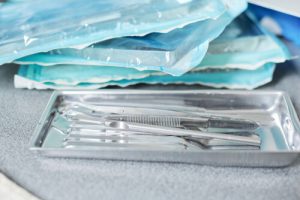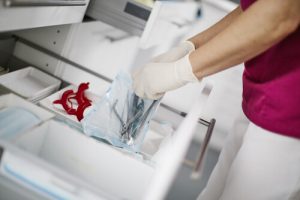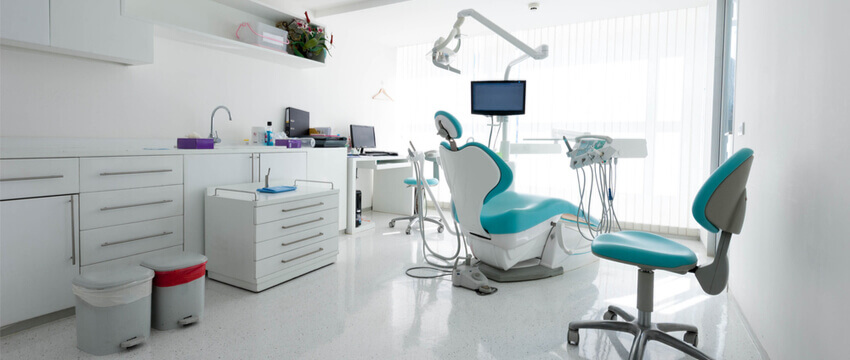We all know that dentists, and any medical professional for that matter, should make sure that the instruments they use on their patients are clean and sterilized. It is against their safety standards to reuse tools that might cause the spread of infection and disease because they are not properly sanitised. This fact is the main reason why dental clinics and offices all over the world are required by their respective dental associations to have a dental autoclave. Let us discover what dental autoclave sterilization steps do dentists follow in order to make sure that every utensil or instrument they use on their patients is sanitised.
Sterilisation: What is it?
 So what is sterilisation, and why is it so important in such a wide range of fields, such as dental clinics, hospitals, research and development facilities, and even tattoo shops? Sterilisation is the removal of all microbes, spores, and viruses from any piece of equipment that came in contact with potentially hazardous materials. In dentistry, the high cost of medical equipment makes sterilization an ideal method to not just destroy microbes but also is more cost-effective. Sterilization is also important to sanitise the equipment between patients to avoid any possible spread of infections.
So what is sterilisation, and why is it so important in such a wide range of fields, such as dental clinics, hospitals, research and development facilities, and even tattoo shops? Sterilisation is the removal of all microbes, spores, and viruses from any piece of equipment that came in contact with potentially hazardous materials. In dentistry, the high cost of medical equipment makes sterilization an ideal method to not just destroy microbes but also is more cost-effective. Sterilization is also important to sanitise the equipment between patients to avoid any possible spread of infections.
What is autoclaving?
A common method to sterilise equipment is by autoclaving. Autoclaving is the use of pressurised steam and high temperature combined to effectively eradicate any microbe, spore, bacteria, or virus that is hard to destroy using other conventional disinfection methods. Dental autoclaves, like MELAG Autoclave, can be found in different sizes, from as small as a crock pot to bigger than conventional refrigerators. The size depends on its location, the capacity of the clinic, as well as the key function of the autoclave in a specific dental practice. Ask our trained sales representatives at Melag Autoclave so you can be efficiently guided when choosing a suitable dental autoclave for your practice.
Dental Autoclave Sterilization Steps
While we, at Melag Autoclave, would always recommend to our customers to adhere to their respective autoclave instruction manual for their particular model, there are some universal guidelines and procedures that any of the dental team should follow to ensure that the dental autoclave sterilization steps and performed successfully.
- Load the instruments into the dental autoclave as soon as they are dry after they have been cleaned. This will prevent any debris from building up.
- Stack the instruments into the autoclave properly. Instruments should be laid flat and not overlapping. Hinged instruments should be open to expose the surface area to the steam. The packed instruments should have the plastic part of the pouch facing upwards so that the moisture from the steam during sterilisation would be absorbed by the paper and would not stay on the instruments. Only load instruments into sterile perforated trays.
- Do not overload the autoclave. While a MELAG autoclave is designed to hold a large number of instruments, it is crucial not to exceed the maximum recommended weight for a specific model as this can reduce the efficiency of the sterilisation process and may mean that you need to re-sterilise the contents of the chamber.
- Check the water gauge prior to autoclaving to ensure that there is sufficient water steam sterilise the instruments.
- Choose and initiate the appropriate sterilisation cycle. You may need to perform a test program before initiating the cycle if this is the first time the autoclave has been used, or if you are running a scheduled maintenance.

- After the cycle is complete, check indicators and initialise printer readout or display to confirm that the sterilisation procedure that took place is successful. File or upload records to the database to accurately track sterilisation and ensure consistent hygienic practices across your dental facility.
- Keep wrapped items inside pouches and place unwrapped items in sterile containers until they need to be used.
- Remove wastewater then clean out the chamber and tank for the next cycle of use.
Since sterilization is important in any health facility, having an autoclave is a piece of necessary equipment in your office or practice. An autoclave allows you to sterilise large quantities of instruments and textiles simultaneously, so you will always have the right tool for the job. For any inquiries about how to select the right dental autoclave for your office, do not hesitate to call and visit Melag Autoclave so we can help you make the right choice.


